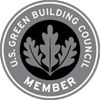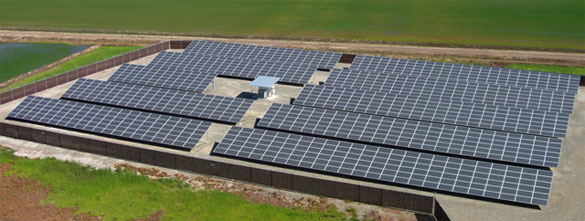Sustainable Design
Sustainable Design has become more than a catch phrase in the construction industry. The principles and strategies for "sustainable design" have, in fact, become standard practice for many consulting design engineers. At O'Mahony & Myer we have been applying these principles and strategies for years, sharing a commitment with our clients to always minimize energy consumption and reduce overall energy costs. In fact, as early as 1986 we designed the Unocal Geothermal Division Headquarters building, which was awarded the State of California's Building Energy Efficiency Award of Excellence for its then-innovative and highly effective daylight harvesting/dimming control system(s), custom-designed by our lighting design studio. Today we are a member of the U.S. Green Building Council (USGBC) and have over 75 projects in various stages of the LEED® certification process, from Certified to Registered to intended for certification, as well as being designed to meet LEED criteria without intending to apply for certification.
for its then-innovative and highly effective daylight harvesting/dimming control system(s), custom-designed by our lighting design studio. Today we are a member of the U.S. Green Building Council (USGBC) and have over 75 projects in various stages of the LEED® certification process, from Certified to Registered to intended for certification, as well as being designed to meet LEED criteria without intending to apply for certification.
Sustainable design practices are indeed important, but we believe they are not an end unto themselves. A balanced approach of energy efficiency, practical functionality, and aesthetics informs our decision making process. At O'Mahony & Myer, we start with the right solutions for our clients and end-users based upon industry standards, our technical expertise, and innovation. We scrutinize every component of the design in order to minimize energy usage and strive to reduce the variation in specified materials and equipment to reduce resource consumption and future maintenance costs. By staying informed on the latest in industry breakthroughs in energy efficiency and controllability, we design systems that maximize energy savings while still providing safe and visually stimulating environments. For example, with careful daylighting analysis, our designers can determine the best applications for dimming and switching for electric lighting systems, reducing daytime energy costs without sacrificing nighttime visual performance.
In addition, we are recognized as experts at controlling light pollution and light trespass in all installations, especially on projects with extensive site lighting requirements. Our designs have helped make "good neighbors" of our end-users and building owners for the past three decades. In fact, our 2007 site-lighting design for the new Yosemite National Park Employee Housing Facility was identified as a perfect prototypical site-lighting design for all the Park's exterior lighting, and has been applied to subsequent projects throughout the Park.
Photovoltaic System Design
As part of our commitment to a sustainable future, O'Mahony & Myer has become a leader in the technical design and specification of Photovoltaic (PV) Power Systems for any size project. We have designed numerous PV systems, from 5 Kilowatts to 3 Megawatts, with interconnecting voltages from 120/240V up to 12kV and 21kV medium voltage systems. We also have extensive experience with both roof-mounted and ground-mounted arrays, with fixed tilt, self ballasted, single, and dual axis tracker assemblies, as well as crystalline, thin-film, and glass integrated PV modules. (more)
LEED® Certification
As members of the U.S. Green Building Council, we fully support and participate in the Leadership in Energy and Environmental Design (LEED) certification process. Our designs can meet and exceed many of the LEED requirements for energy efficiency, light trespass, and on-site power generation - and contribute significantly to qualifying for official LEED Certification.
We are well versed in the requirements for the full range of LEED rating systems:
- LEED for Existing Buildings
- LEED for New Construction
- LEED for Commercial Interiors
- LEED for Core and Shell
- LEED for Schools
- LEED for Retail
And, we offer support for achieving the following credits under the various LEED rating systems:
- Light Pollution Reduction
- Fundamental Commissioning of the Building Energy Systems
- Minimum Energy Performance
- Optimize Energy Performance
- On-Site Renewable Energy
- Controllability of Systems - Lighting
- Measurement and Verification
LEED Projects [PDF]



